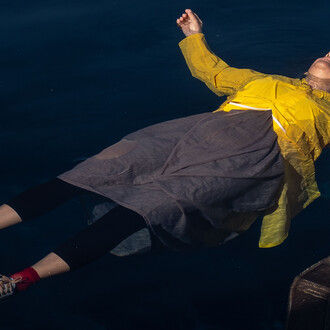Johyun Gallery Seoul is pleased to announce a two-person exhibition featuring Chung Chang-Sup and Kwon Dae Sup, on view from 6 March to 11 May 2025. Chung Chang-Sup, a pioneering figure of Korea’s first-generation Dansaekhwa (Korean monochrome painting) movement, is renowned for integrating Hanji—traditional Korean paper made from mulberry bark—into his canvases. Kwon Dae Sup, on the other hand, carries forward the legacy of Joseon white porcelain, pushing its boundaries to explore contemporary plasticity. Despite working in different eras and mediums, both artists delve into the essence of Korean aesthetics, where materiality and spirit harmoniously converge across time and tradition. This exhibition highlights the profound artistic worlds of both masters, who have deeply engaged with the intrinsic qualities of their materials. Featured works include four pieces from Chung Chang-Sup’s Tak series, which he began in 1980, along with four Moon Jars by Kwon Dae Sup from 2024. This exhibition will showcase the artistic worlds of both artists, who are deeply engaged with the unique properties of their materials.
Chung Chang-Sup is an artist who embraced the Western aesthetics of Informalism, while experimenting with the possibilities of Korean abstract art based on naturalistic philosophy. In the 1970s, he began to use Hanji, made from dak wood, as his primary material, and from the 1980s onwards, he delved into forms that are ‘drawn but not drawn, unintended but accomplished’ through his Mukgo series. The process of hand-forming and laying out the Hanji on the canvas emphasises its inherent materiality beyond visual composition. This repetitive act of kneading and pounding the paper mulberry reveals the haphazard forms and intimate symbols within the materiality of the paper, while at the same time emptying the self and reaching a state of profound immersion.
Kwon Dae Sup has spent nearly 50 years studying 17th- and 18th-century white porcelain from the Joseon Dynasty, reinterpreting its traditions through a contemporary lens. Among his works, the 45 cm-tall Moon Jar stands out as a uniquely Korean ceramic form. The process of placing clay on the potter’s wheel and shaping it in the fire is a laborious, almost meditative practice. The climate, the soil, the quality of the fuel, and fluctuations in kiln pressure all influence the jar’s color, sheen, surface irregularities, and blemishes, endowing each piece with its own distinctive character. Kwon’s work is far from mere reproduction. While he faithfully adheres to the traditional forms and techniques of white porcelain, he builds his own visual language by merging contemporary sculptural sensibilities with his personal aesthetic. His Moon Jars—exquisitely balanced despite their imperfect proportions—feature an interplay of smooth surfaces and coarse textures, creating a profound resonance that feels steeped in time. Navigating between tradition and experimentation, Kwon works guided not by rigid rules but by intuition and sensation. He creates without pretension, simply crafting what he desires—and it is within this honest process that the aesthetic spirit of Korean craftsmanship truly lives.
Chung’s Tak series and Kwon’s Moon jars transcend simple forms, reinterpreting Korean sentiments from different eras and traditions in a contemporary lens. This exhibition highlights the originality and continuity of Korean art, offering an opportunity to explore the past and future of Korean aesthetics—an ongoing phenomenon that continues to thrive within the currents of the post-postmodern era, even after the supposed end of Western minimalism in the 1970s.














